Sri Sarangapani Temple in Kumbakonam, Tanjore: Lord Vishnu with a Bow – one of the famous 108 Divya Desams, Lord Vishnu Temples – Visit, Temple Timings, History, Travel Guide (Updated)
– 3rd major divya desams temples of lord vishnu in south india
Kumbakonam is famously called the Spiritual and Temple town, as it has the presence of numerous temples around the location, showcasing the marvelous history of the Chola kingdom and its architecture. Kumbakonam is also one of the oldest cities in Tamil Nadu and is situated 37 km from Thanjavur District. The place has major Lord Shiva and Lord Vishnu temples, and the huge water tank known as the “Mahamaham Tank” – which is situated at the center of the Kumbakonam city and is famous for the “Mahamaham Festival” which happens once in twelve years.
Kumbakonam is also famous for its traditional textiles, filter coffee – called the Kumbakonam degree coffee, bronze casting, and jewelry making it one of the major commercial and craft centre in Tamil Nadu.
Sri Sarangapani Temple, Kumbakonam – the Lord Vishnu with a Bow:
The famous Saranagapani Temple is dedicated to Lord Vishnu and is located at Kumbakonam in the Tanjore district of Tamil Nadu on the banks of River Cauvery. Among the 108 Divya Desams, the Sarangapani Temple is the 3rd most revered temple after The great Srirangam Temple and the Tirupati Temple. It is also the Pancha Ranga Khestras – one of the five sacred temples dedicated to an avatar of Lord Vishnu.
Usually, in all Vaishnava temples, the Lord Vishnu – Perumal is seen carrying a conch and a wheel in his hands. But at the Sarangapani temple, Lord Vishnu has a bow called “Sarangam” in his hands, so the lord’s name is derived as Sarangapani – “one who has the bow in his hand” in which the Sanskrit word “Sarangam” – means bow of Vishnu and “Pani” – means hand.
Lord Sarangapani blesses the devotes in his reclining form under the vaideeka vimana tower above the sanctum sanctorum. Lord graces from the sanctum sanctorum along with Mother Koamalavalli daughter of Sage Hemarishi and Mother Mahalakshmi. Lord is in Udhyoga Sayana posture, which means the Lord Vishnu appears as though he is getting up from his sleeping position, while Lord Brahmma is found above his naval and Sun on the head side.
History of Sri Sarangapani Temple:
The sage Hema Rishi is said to have undertaken a severe penance in order to receive Goddess Lakshmi as his daughter. Lord Vishnu who was impressed by his penance, fulfilled his wish. “Komalavalli” was the name given to Goddess Lakshmi after she was born out of a lotus in the Potramarai Tank.
Lord Vishnu descended to earth as “Aravamudhan” in a chariot drawn by horses and elephants from his abode Vaikuntam. He stayed in the nearby Someswaran Temple to convince Lakshmi to marry him and the couple eventually got married. Hence, the temple pond Potramarai Tank is held in high regard.
Sarangapani Temple is the very oldest temple in Tamil Nadu. Three significant South Indian dynasties, notably the Cholas, Vijayanagar, and Nayaks, have influenced the temple’s architecture. As a result, it has a fantastic mix of architectural styles.
This largest Sarangapani Temple was erected between the 13th and 17th centuries. The Sarangapani Temple existed during the Pallava period. However, the current structure is attributed to the period of Vikrama Chola and it was renovated during the period of Nayaks. Later Cholas built the superstructure of the 11 tiered gopurams, and the tower was actually completed by the Vijayanagar rulers. As the Lord Vishnu came here in a Rath – a four-wheeled carriage drawn by horses to marry the Goddess Lakshmi, the temple is said to be constructed in the shape of a rath.
The central shrine of the temple is in the form of a chariot drawn by horses and elephants, with openings on either side, showing the descent of Sarangapani from heaven in the chariot. The Presiding deity is Sri Sarangapani Swami and he is also known as “Aarava Amudhan” – which means endless or ceaseless nectar. The consort of this temple’s Lord Vishnu is Komalavalli Thayar.
The Sarangapani Temple comprises the eleven tiered Raja Gopuram, which has a height of 173 feet, and five other small gopurams. This temple is said to be the third tallest temple gopuram among the Divya Desams, while the other two are Srirangam temple – 236 feet and Srivilliputhur – 192 feet.
The central shrine of the temple houses the Sarangapani in pallikonda posture, with his head resting on his right hand. There are two stepped entrances to the sanctum named “Utharayana Vaasal” and “Dhakshanayana Vaasal”, each of these entrances is open for a six-month period. From 15 January to 15 July, Utharayanya Vaasal is opened while the Dhakshanaya Vaasal is opened during the other half of the year. It is believed that passing through the Uthirayana and Dakshinayana entrances is the same as entering the Sorgavasal.
In the sanctum, there is a beautifully carved out 12 pillared mandapa going by the Tirumamani mandapam reminiscent of the similar Mandapa at Sri Vaikuntham, so this temple is called the Bhuloka Vaikuntha like Srirangam. The Potramarai Temple Tank is near the Western entrance. The Potramarai tank has a central hall called Hemarishi Mandapam. The sculptures of Narasimha Avatar are beautifully set around the sanctum sanctorum.
Pancharanga Kshetrams :
The Sarangapani Temple in Kumbakonam is one of the Pancharanga Kshetrams – the Five Vishnu Temples located on the banks of the Cauvery river. The other four temples are Srirangapatna Ranganathaswamy Temple, Srirangam Temple, Appalarangam in Tiruppernagar, Parimala Ranganatha Perumal Temple in Mayiladuthurai and Vatarangam in Sirkazhi as the fifth temple.
Significance of Sri Sarangapani Temple :
Lord Santhana Krishnan blesses the devotees in a shrine before the sanctum sanctorum. On the Vaikunta Ekadasi day in December – January, the majority of Divyadesa temples have Sorgavasal open. As the Perumal at this temple comes directly from His Vaikunta Divyadesa to this Divyadesa. So worshipping Lord Sarangapani would take his devotees to salvation – Moksha.
Lord Perumal’s rests at the Uddhana Sayana positions at this Kumbakonam Sarangapani temple. Perumal is also known as Aravamudha Azhwar in the temple as he was was instrumental in the compilation of the Nalayaira Divya Prapandam, which contains 4000 lines about Perumal’s splendor.
Kumbakonam Lord Sarangapani has 7 Azhwar’s Mangalasasanams, while the Srirangam has 11 Azhwar’s Mangalasasanams and the Tirupathi Venkatachalapathi has 10 Azhwar’s Mangalasasanams
Goddess Komalavalli was born in the town of Kumbakonam. The place thus is revered as the Avatara Sthala, the birthplace of Goddess Komalavalli-Lakshmi. Following their wedding, Lord Vishnu is said to stay with his consort in his mother-in-law’s home. Sri Komalavalli Thayar is called “Padi Thanda Pathini” – which means who would never leave away from her chamber. The Gomatha Puja – puja to the cow is performed in the Komalavalli Thayar shrine. Pujas to Lord are offered only then.
The Vaideeka Vimanam of this temple is considered to be an offshoot of the Srirangam Pranava vimanam, and a replica of the vimanam presented to Vibishana of Sri Lanka by Lord Rama. A set of footprints outside prakaram temple’s enclosure are worshipped by the devotees as representatives of Lord Vishnu.
The Sarangapani temple is an architectural masterpiece, most colorful and striking eleven gopurams which is a major attraction of this temple. This huge temple tower – gopuram depicts the sculptures showing the ten incarnations of Lord Vishnu, some of the scenes of lovemaking, series of horses, and elephants with armed soldiers. The Bharatnatyam dance movements – some of the 108 karanas are sculpted into the temple’s walls. Brihadeeswarar Temple in Thanjavur and Nataraja Temple in Chidambaram both have similar sculptures.
Temple Festivals at Sri Sarangapani Temple :
The temple has six daily rituals at various times from 5:30 AM to 9 PM, and twelve yearly festivals on its calendar. The chariot festival is the most prominent festival of the temple, celebrated during the Tamil month of Chitthirai – between the March – April Month.
There are two wooden chariots with a well-carved base in front of the temple used for the chariot procession during the month of January and April. The rath yatra of the temple also is famous for its high artistic beauty called Chithira Ther. Saint Tirumangai Azhwar calls this Rathabandham. The twin temple chariots are the third-largest in Tamil Nadu, each weighing 300 tons.
Brahmotsavam, the spring festival, and Navaratri are the other important festivals of this temple. Mahamaham Festival, Deepavali, Akshay Tritiya, Ratasaptami, Brahmotsavam are also some of the important festivals at this temple.
The temple organizes Vishnu Sahasranamam classes daily at 6 pm.
Travel Guide to visit Sri Sarangapani Temple in Kumbakonam, Tanjore
Address : Arulmigu Sarangapani Temple, Valayapettai Agraharam, Kumbakonam, Thanjavur(Dt), Tamil Nadu 612001.
Phone: 0435 243 0349 / 9443524529
Entry Fee: Free
Moolavar: Sarangapani, Aravamudhan (Vishnu)
Amman / Thayar : Komalavalli
Theertham : Hemavalli Pushkarini, Cauvery and Arisil Rivers
Year : 1000-2000 years old
Sri Sarangapani Temple Timings at (Updated Timings):
Morning – 7:00 AM – 12:00 PM
Evening – 5:00 PM – 9:00 PM
The temple organizes Vishnu Sahasranamam classes daily at 6:30 pm.
How to Reach Sri Sarangapani Temple in Kumbakonam, Tanjore :
On-Road: Sarangapani Temple is at center of the town Kumbakonam, and the town is well connected by road networks. There are regular bus services from many important cities of south India Chennai, Coimbatore, Tiruchirapalli, Karaikal, Pudukkottai, Madurai, Tirunelveli, Mayiladudhurai, Pattukkottai, Bangalore, Ernakulam, Ooty, and Mysore.
Nearest Airport: The nearest airport is Tiruchirappalli International Airport (TRZ) which is 100 Km away from the temple.
Nearest Railway Station: The nearest railway station is the Kumbakonam railway station ( station code – KMU) at a distance of 2 km.
Check out and enjoy our photo captures of Sri Sarangapani Temple in Kumbakonam, Tanjore.
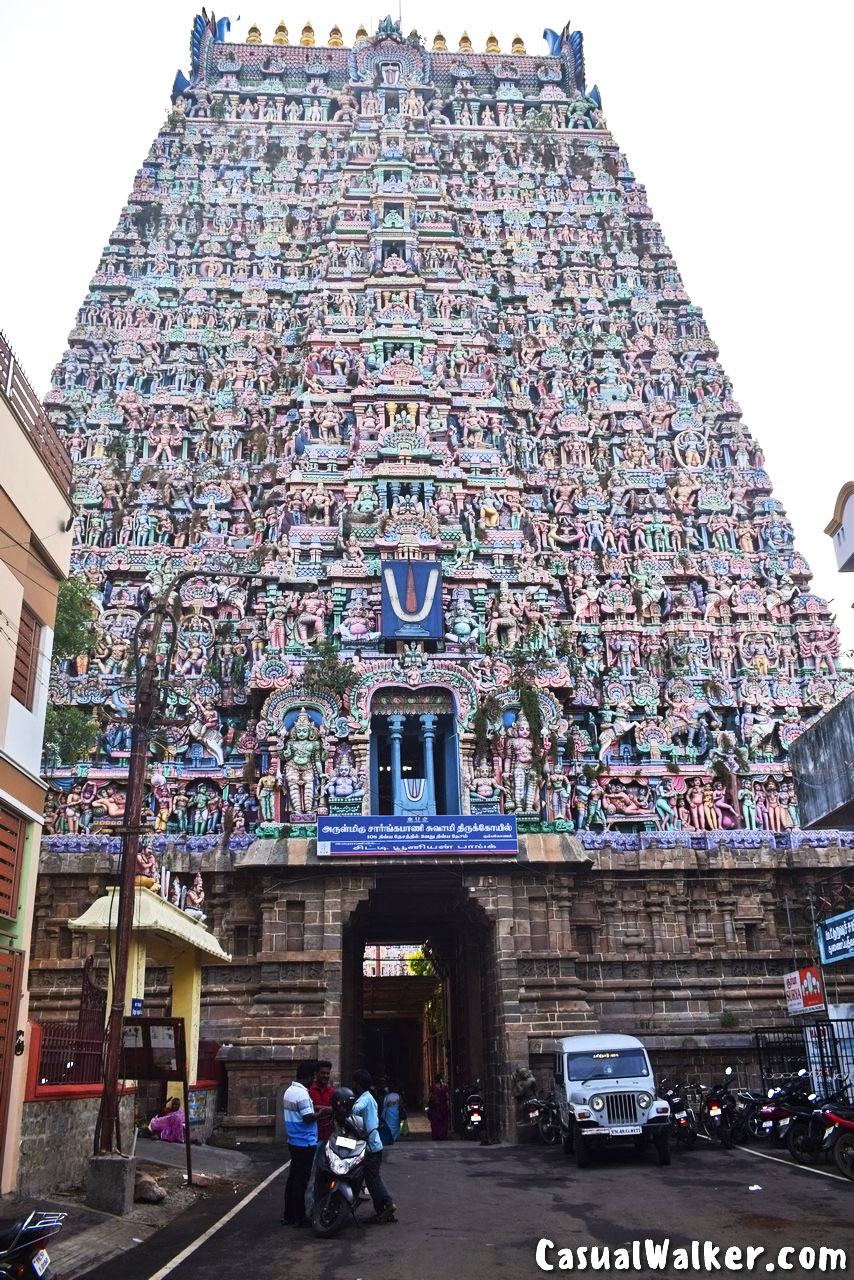
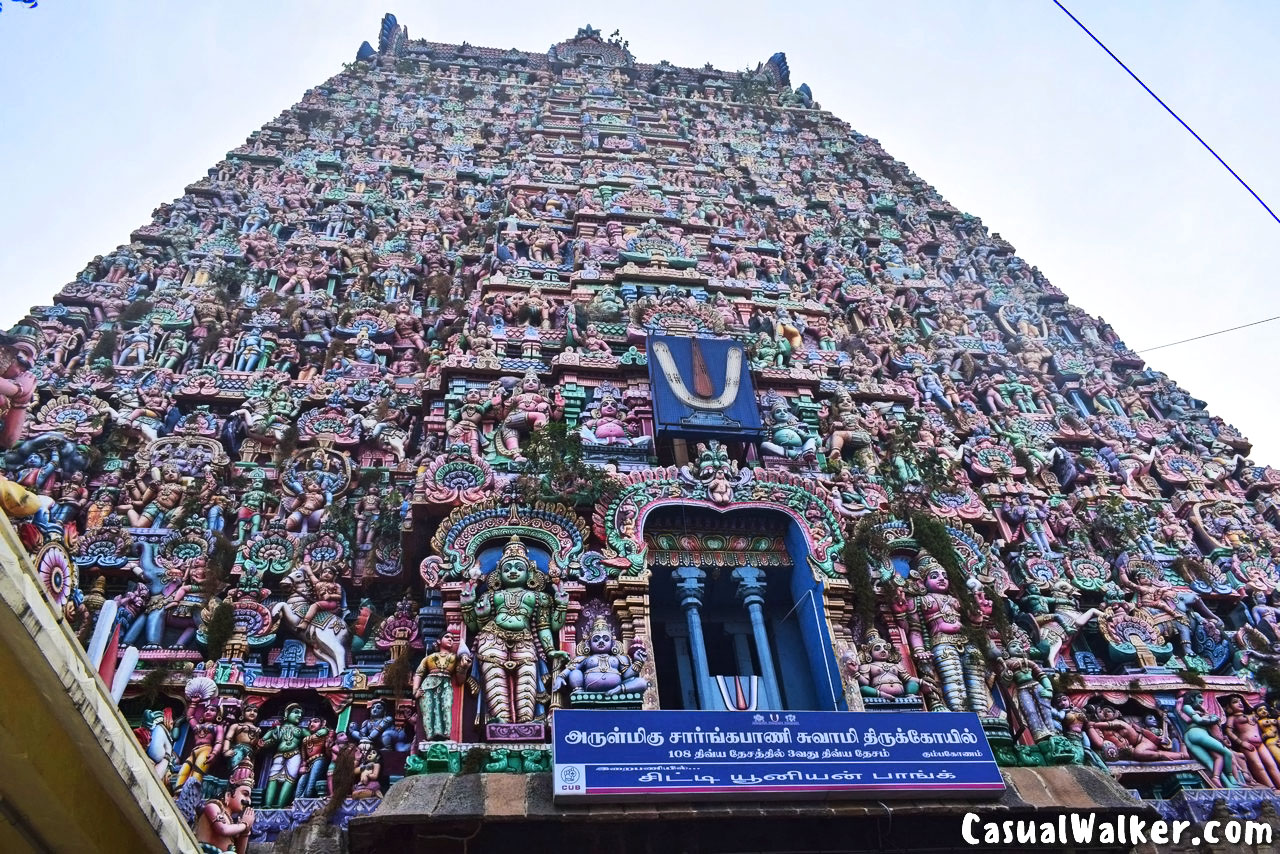
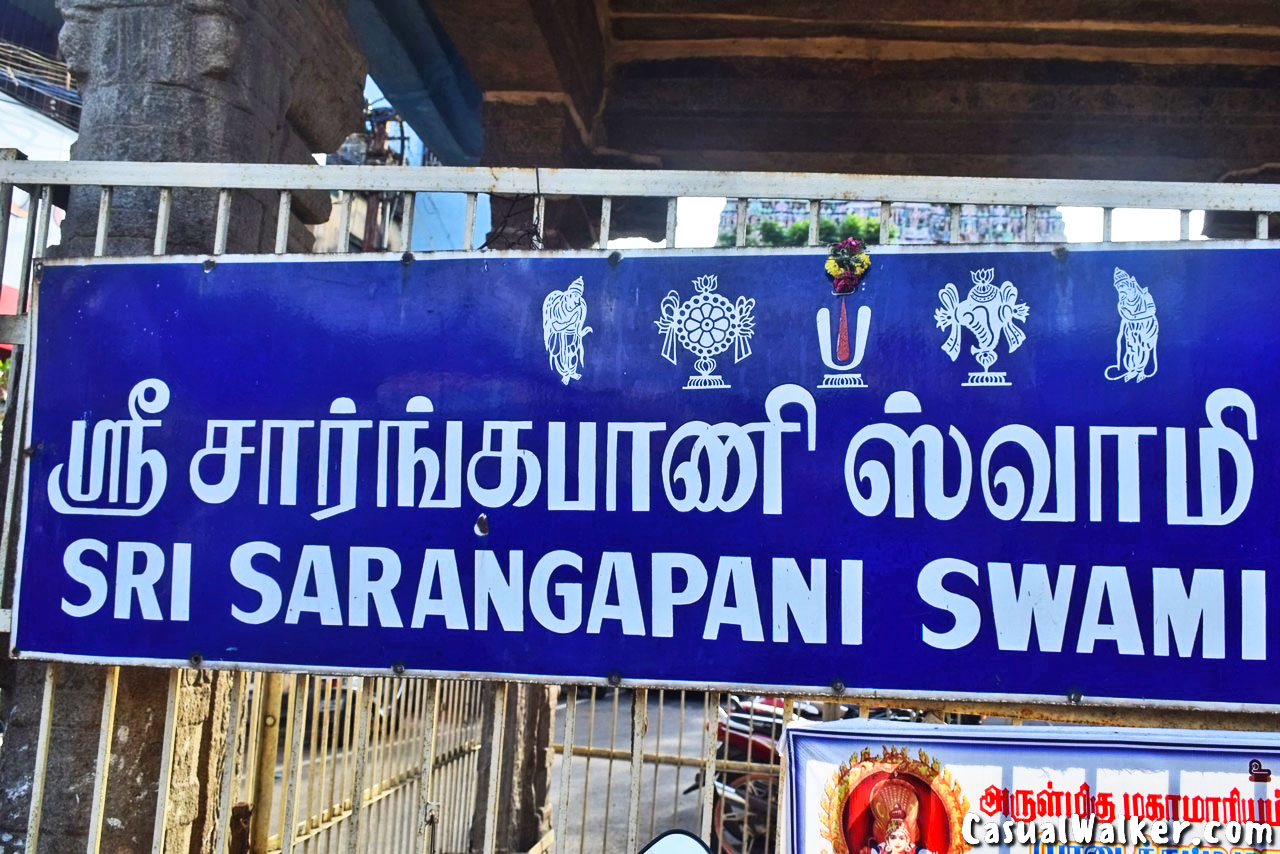
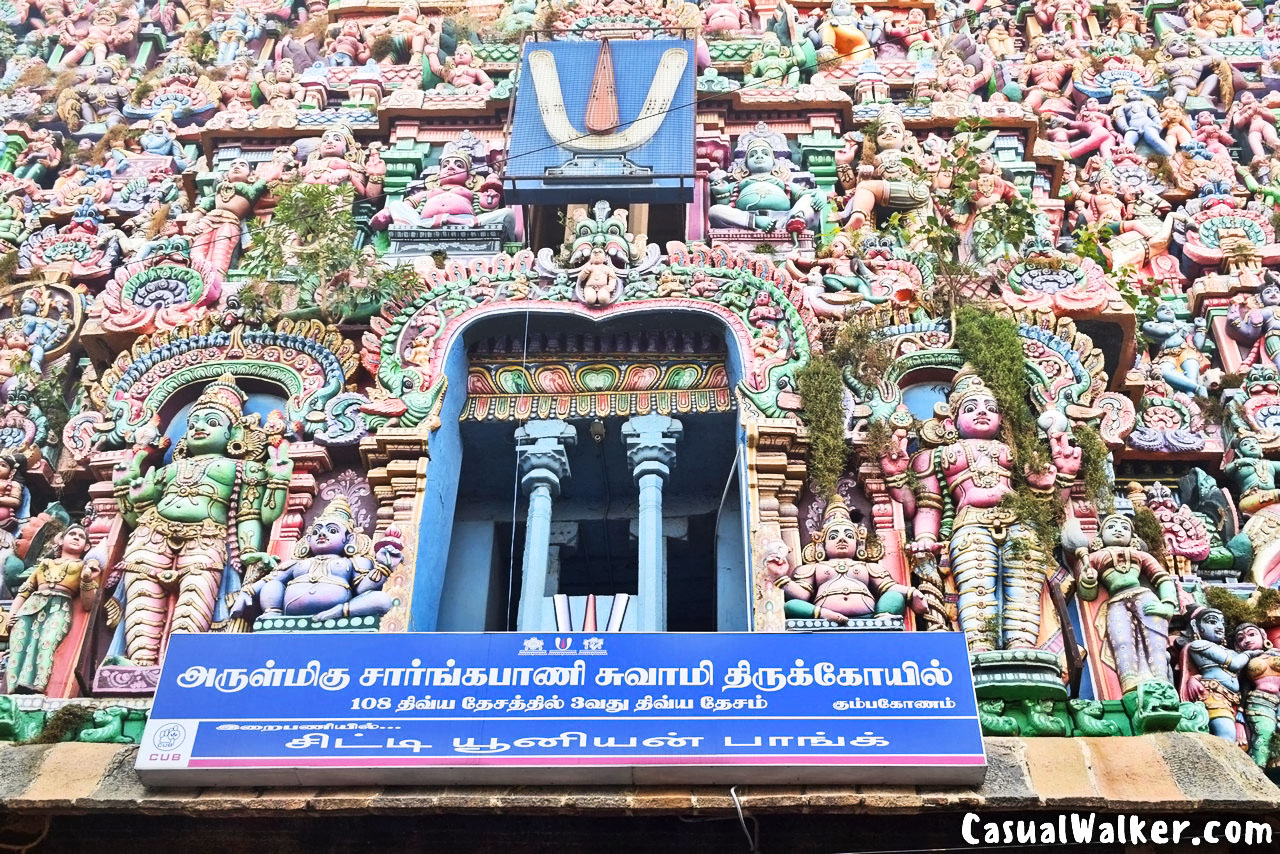
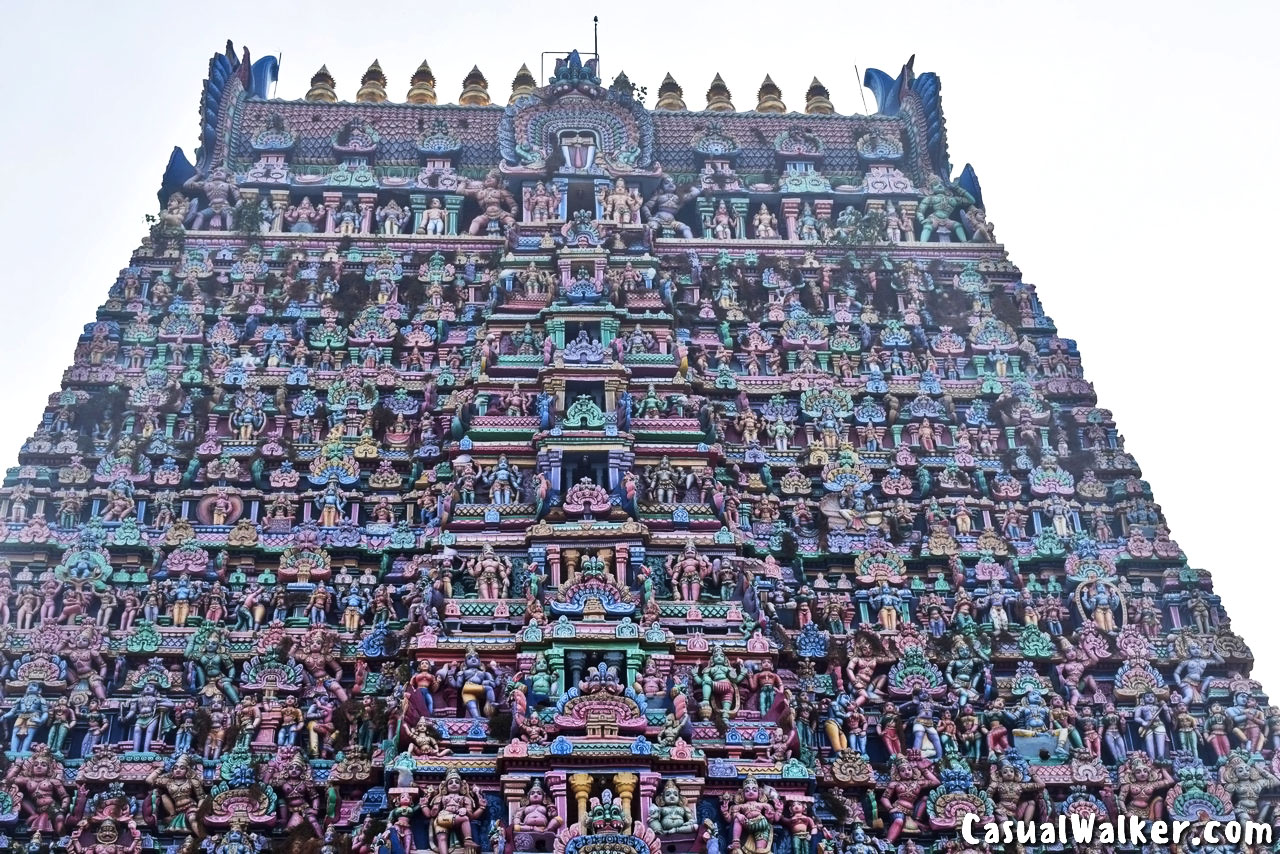



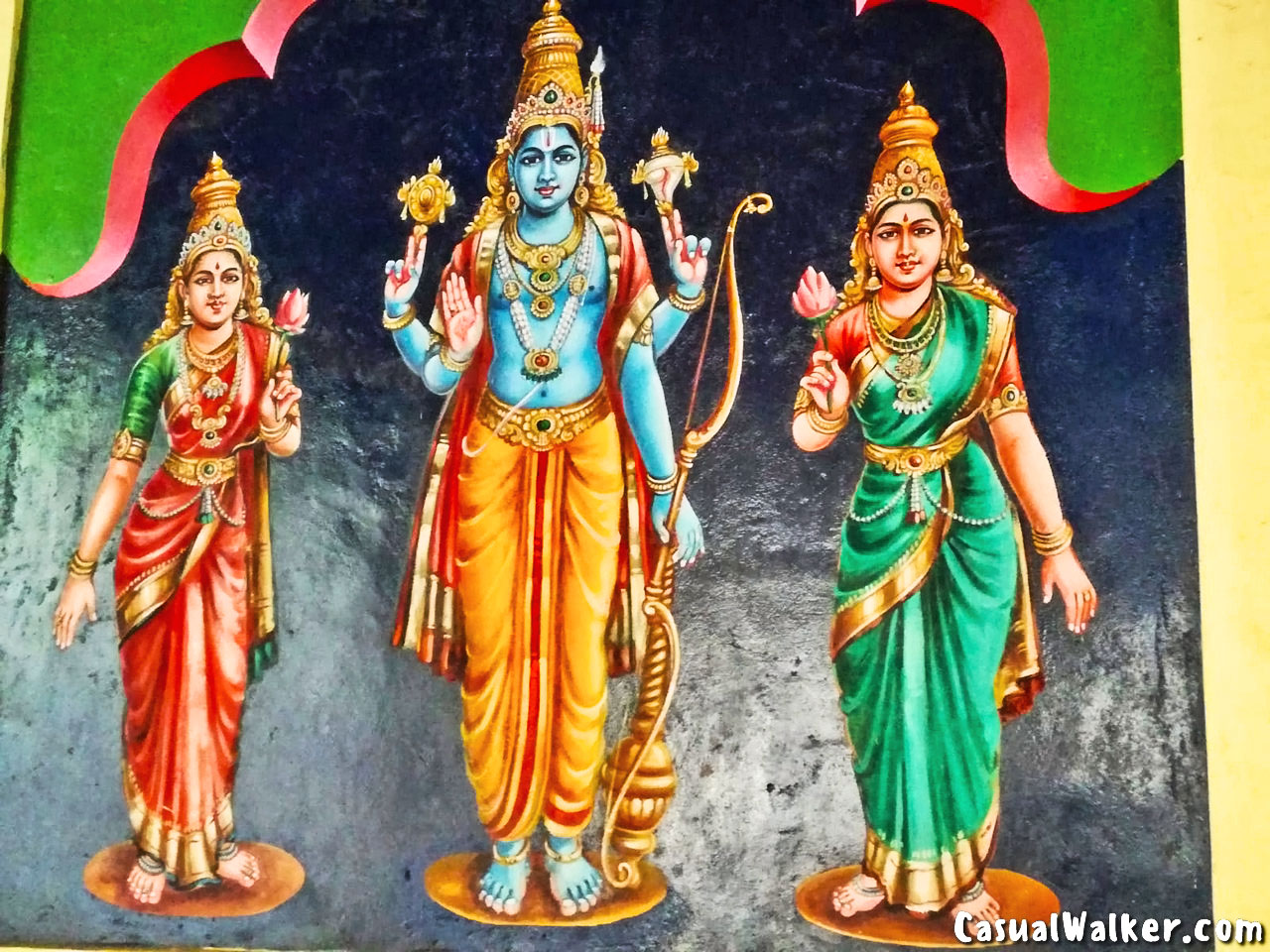
at the Sarangapani temple, Lord Vishnu has a bow called “Sarangam” in his hands, so the lord’s name is derived as Sarangapani – “one who has the bow in his hand” in which the Sanskrit word “Sarangam” – means bow of Vishnu and “Pani” – means hand.
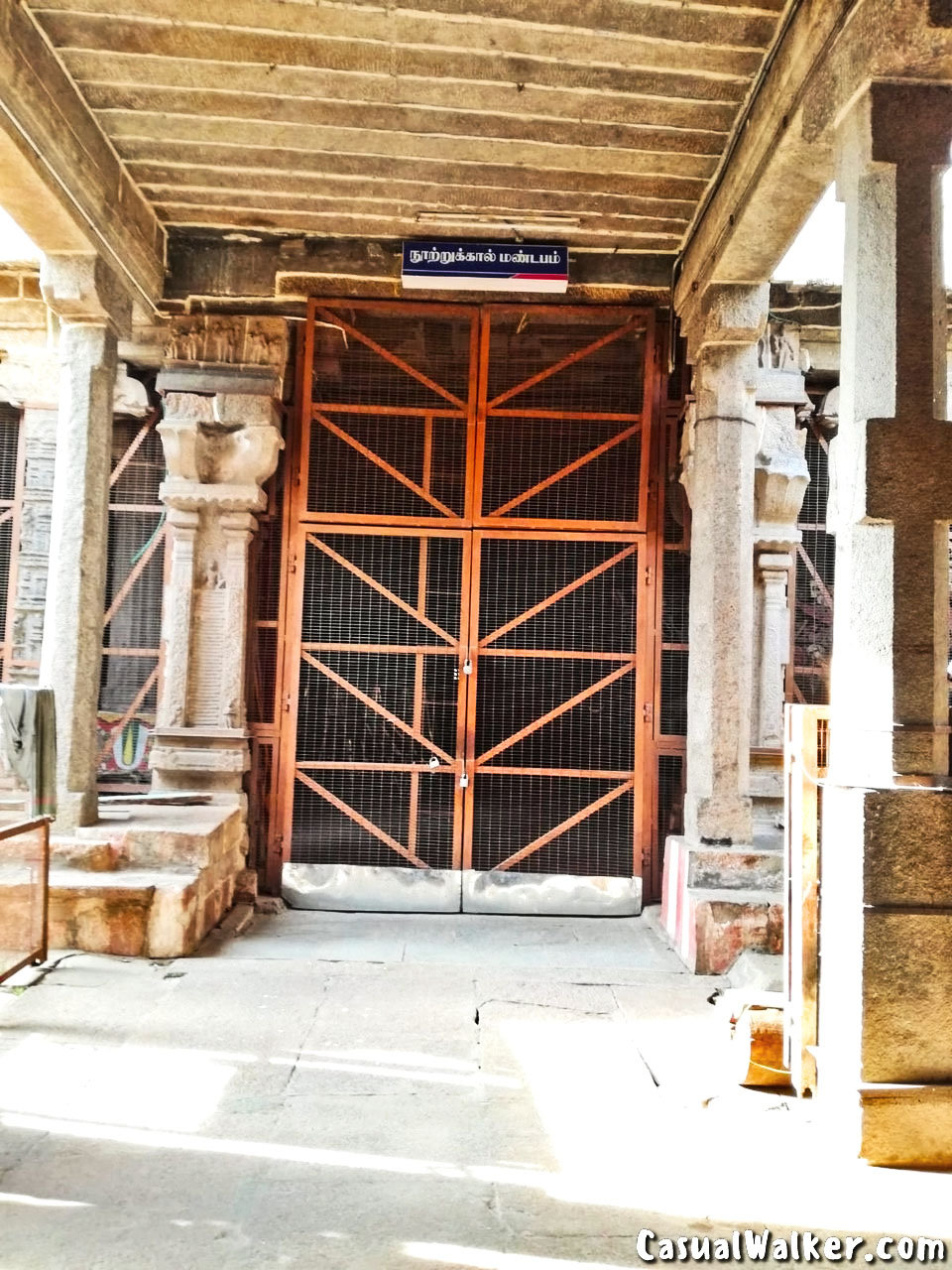

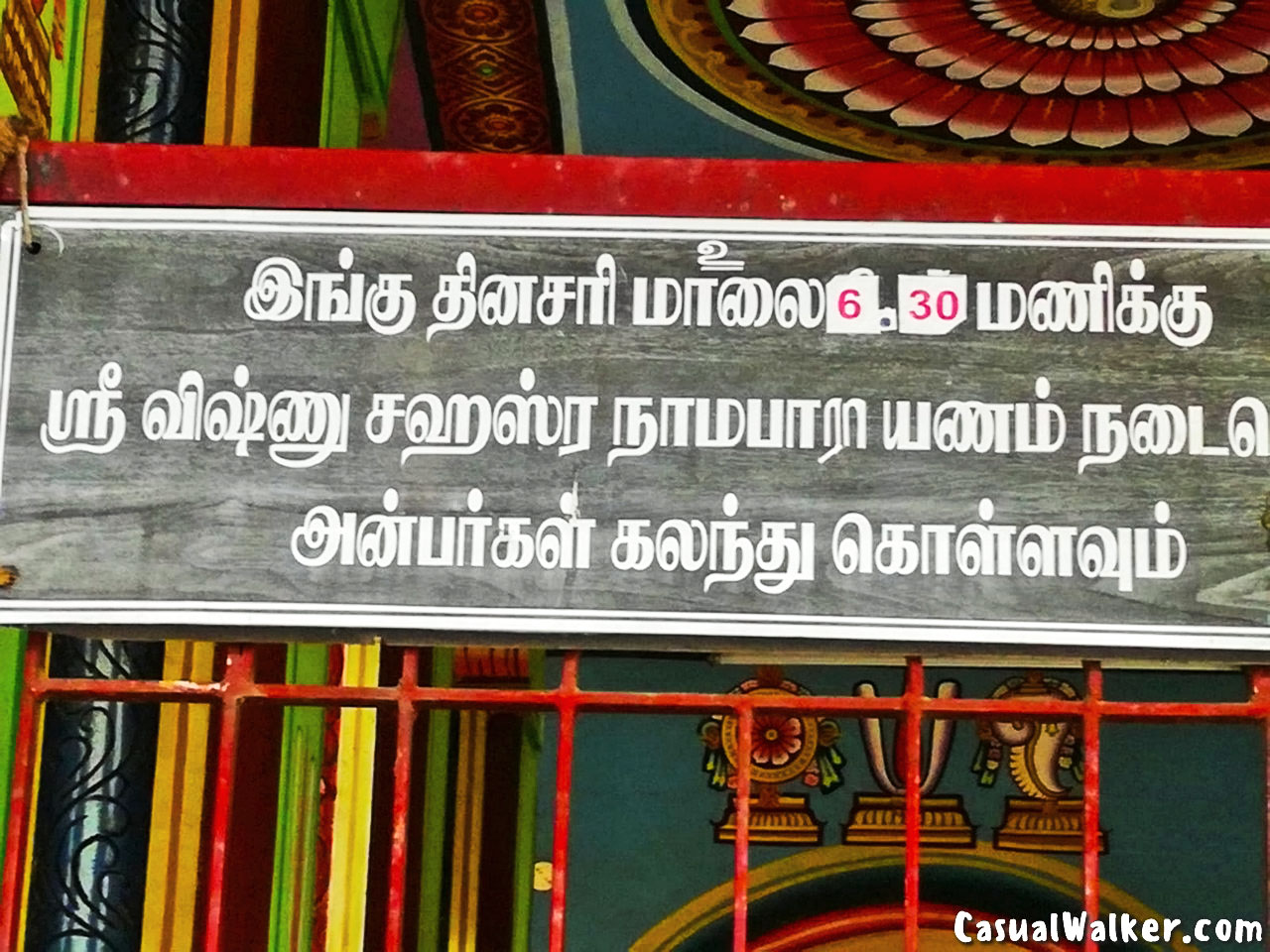
The temple organizes Vishnu Sahasranamam classes daily at 6:30 pm.
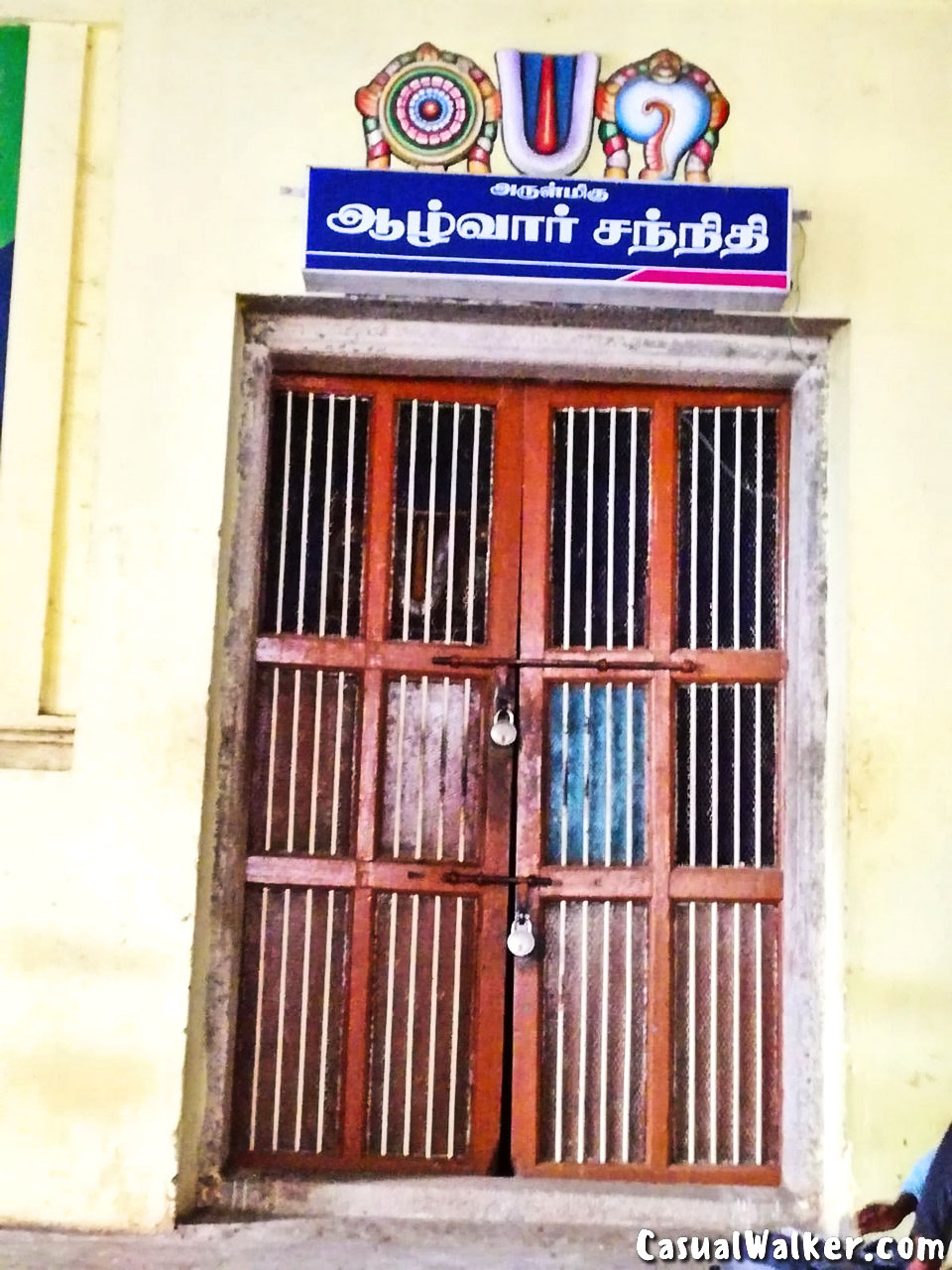
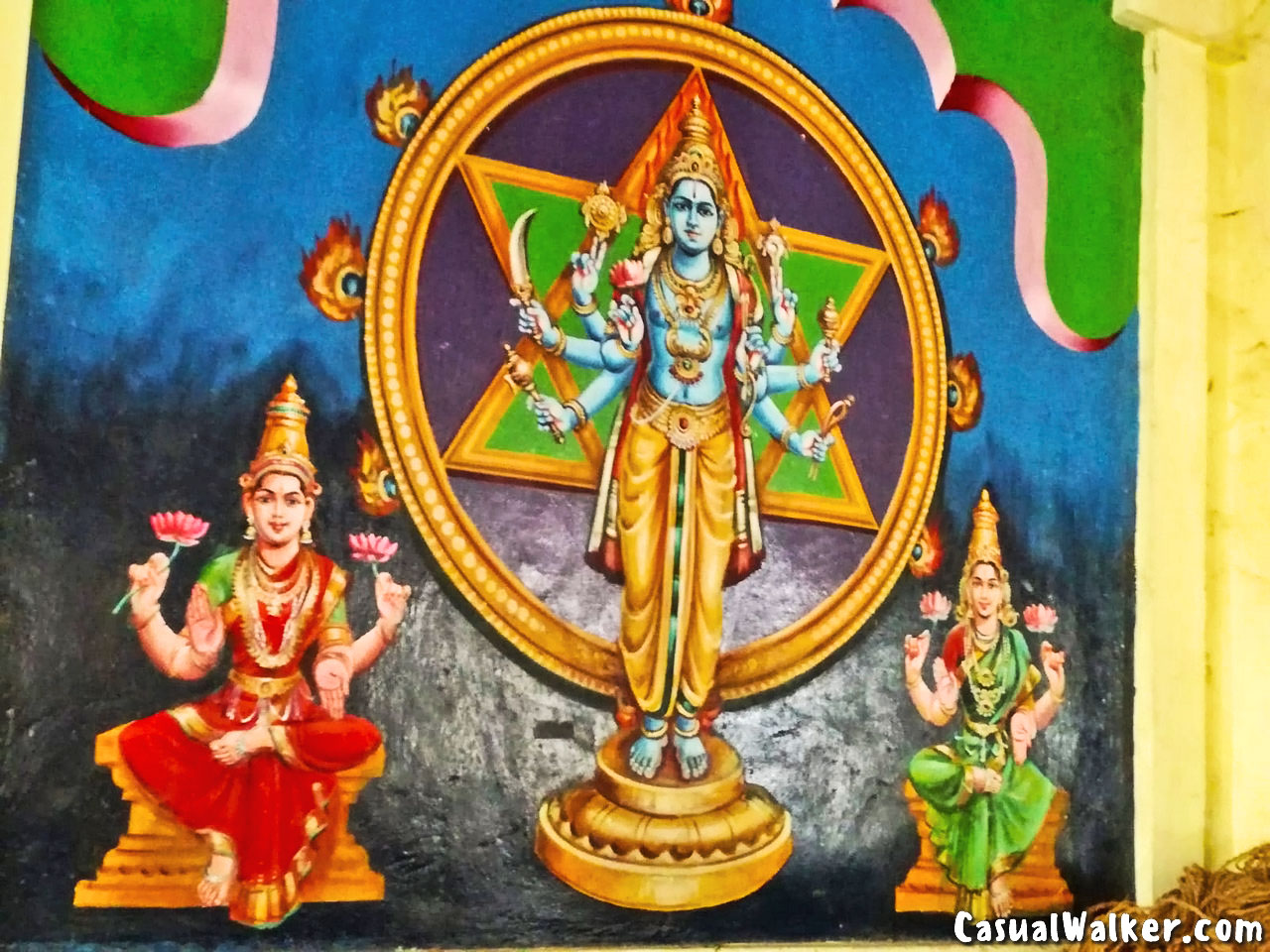
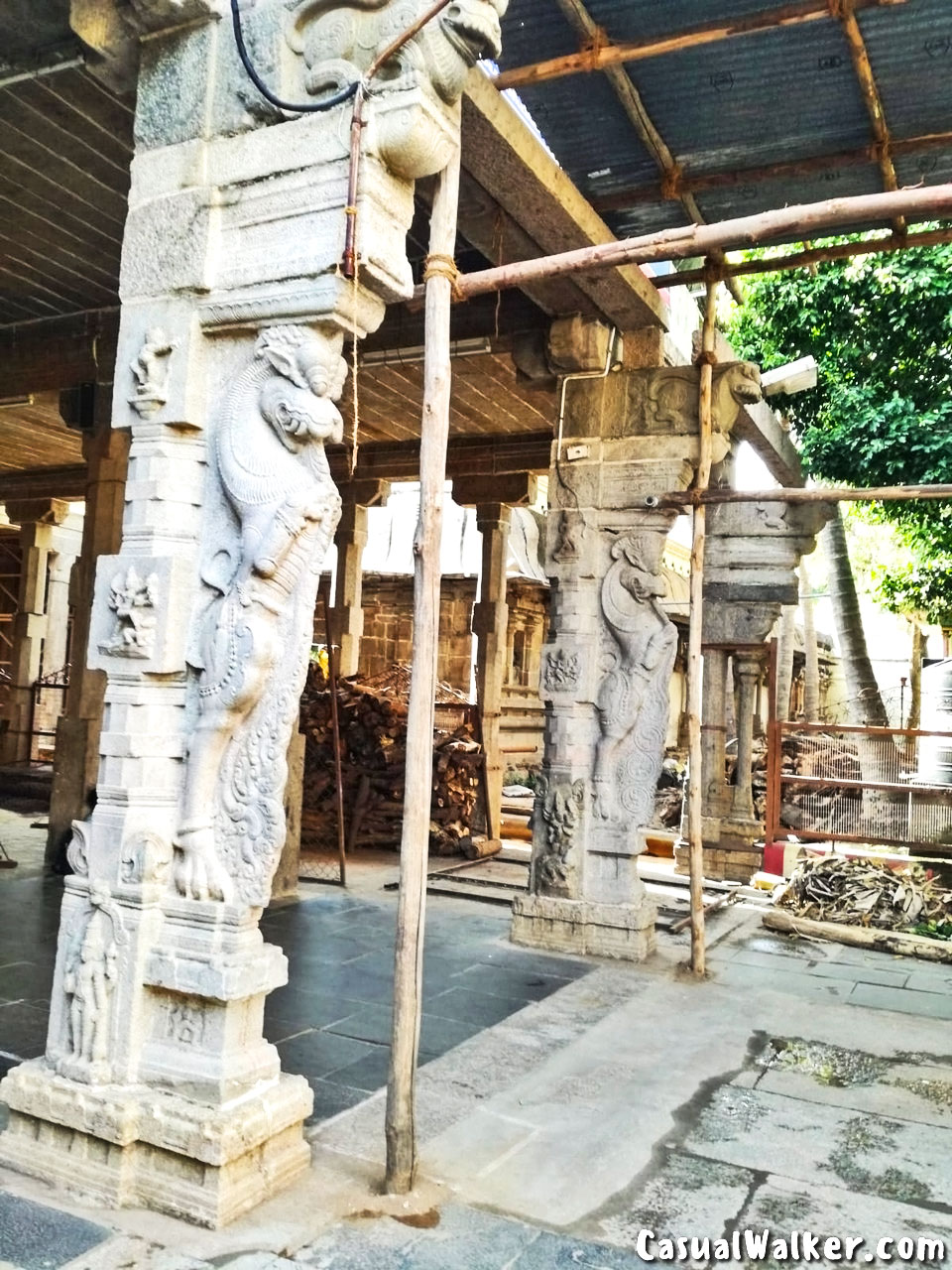
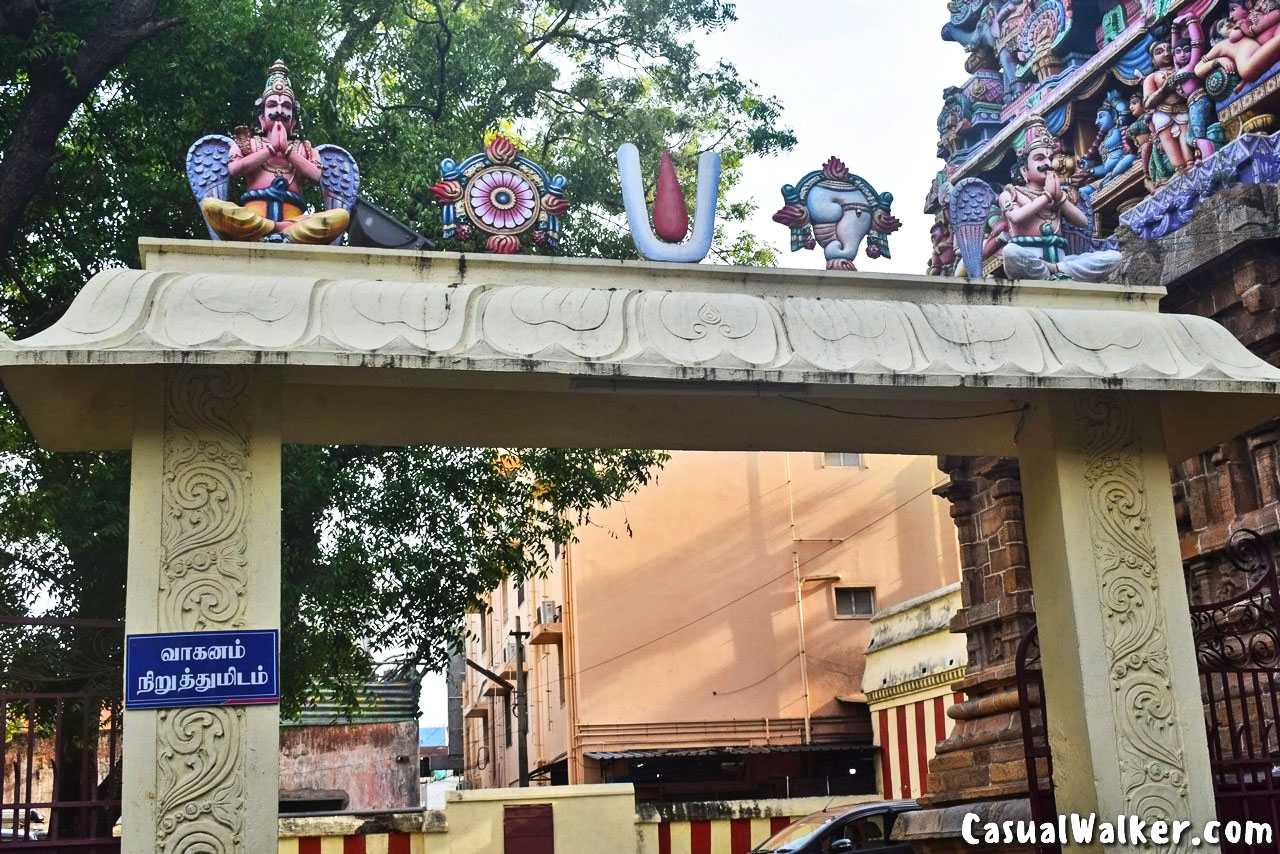
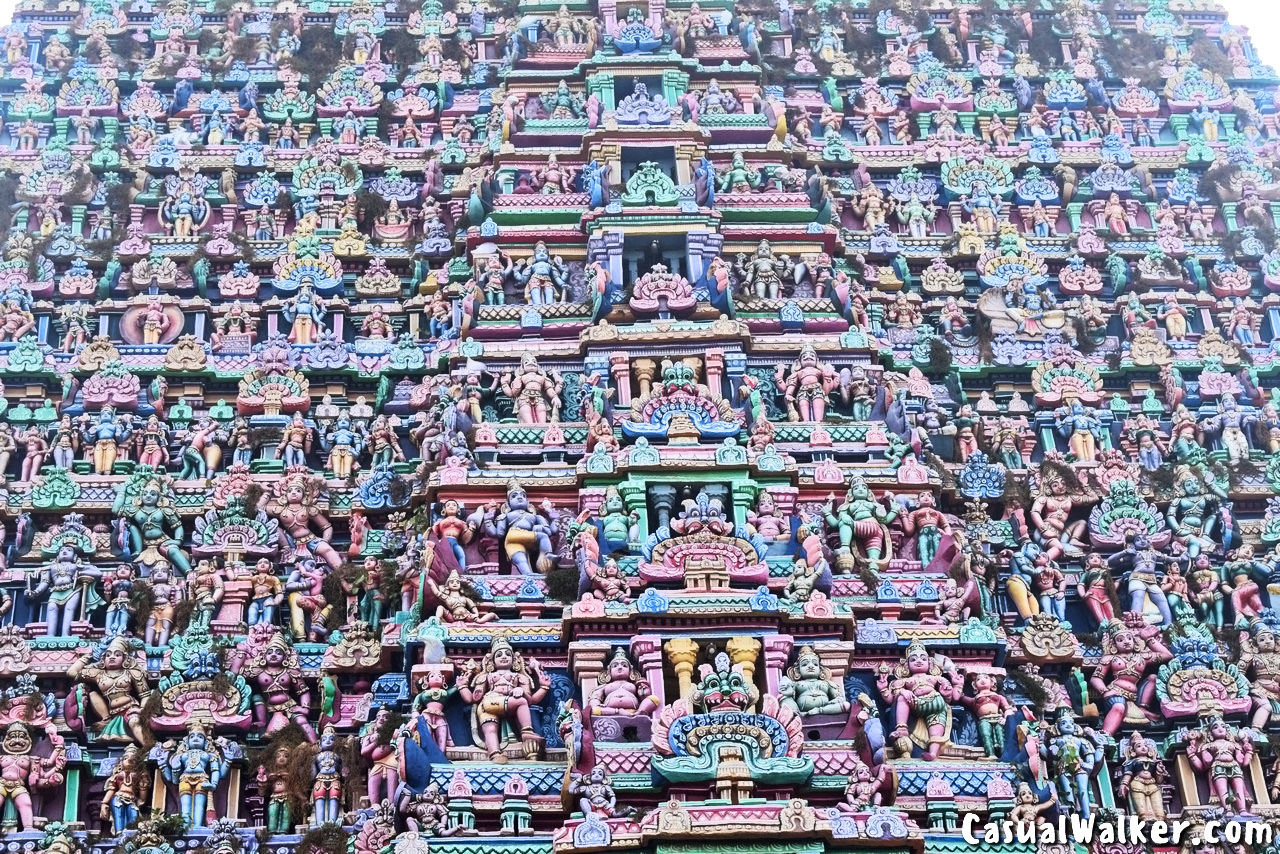
This huge Sarangapani temple tower is an architectural masterpiece, the most colorful tower – the gopuram depicts the sculptures showing the ten incarnations of Lord Vishnu
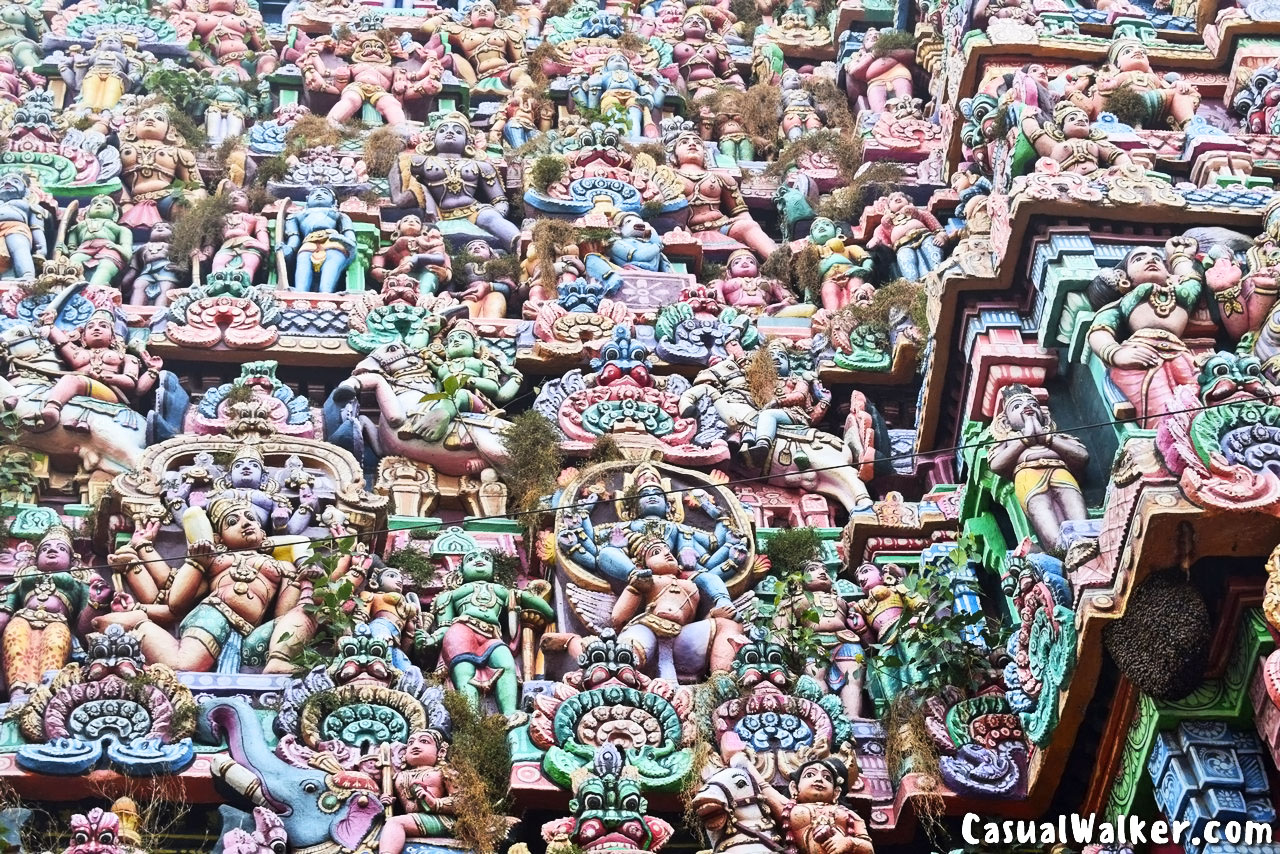
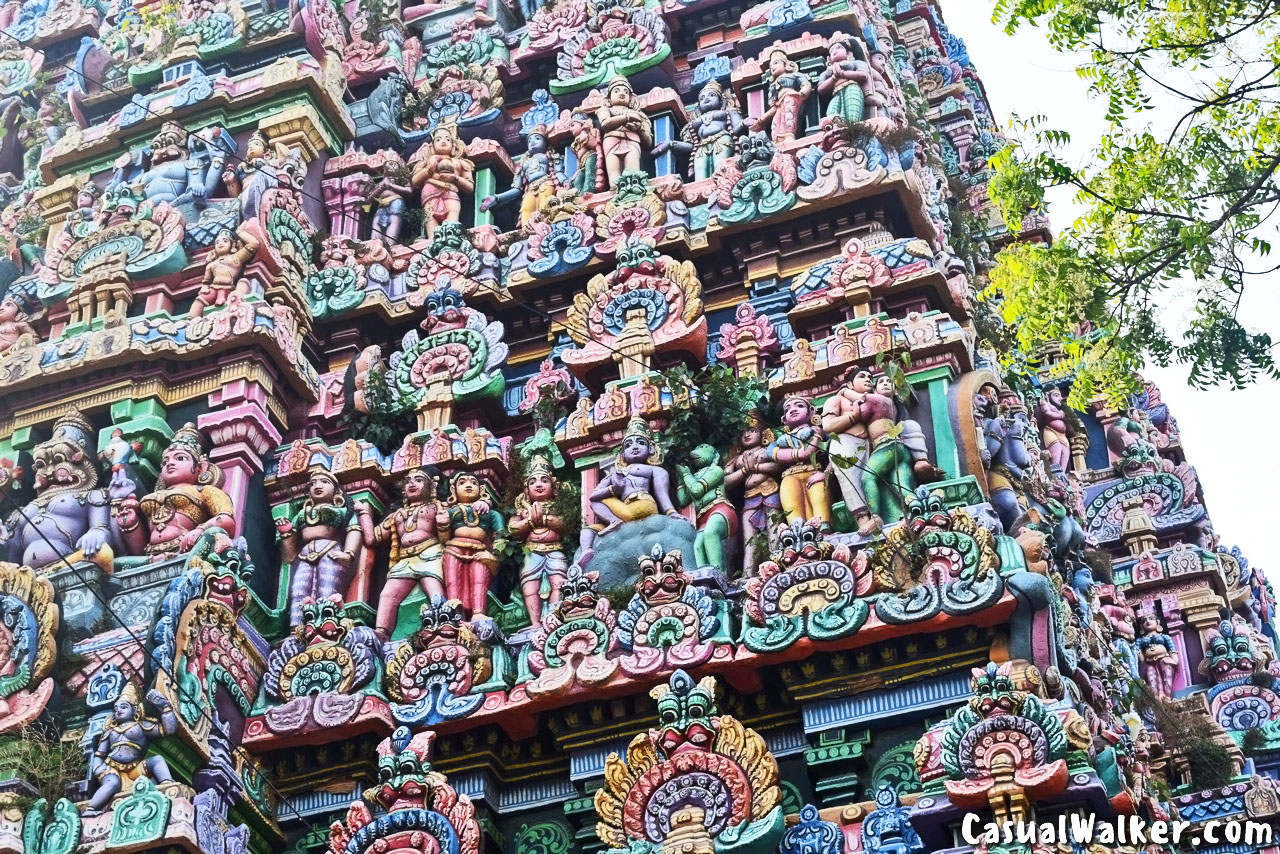
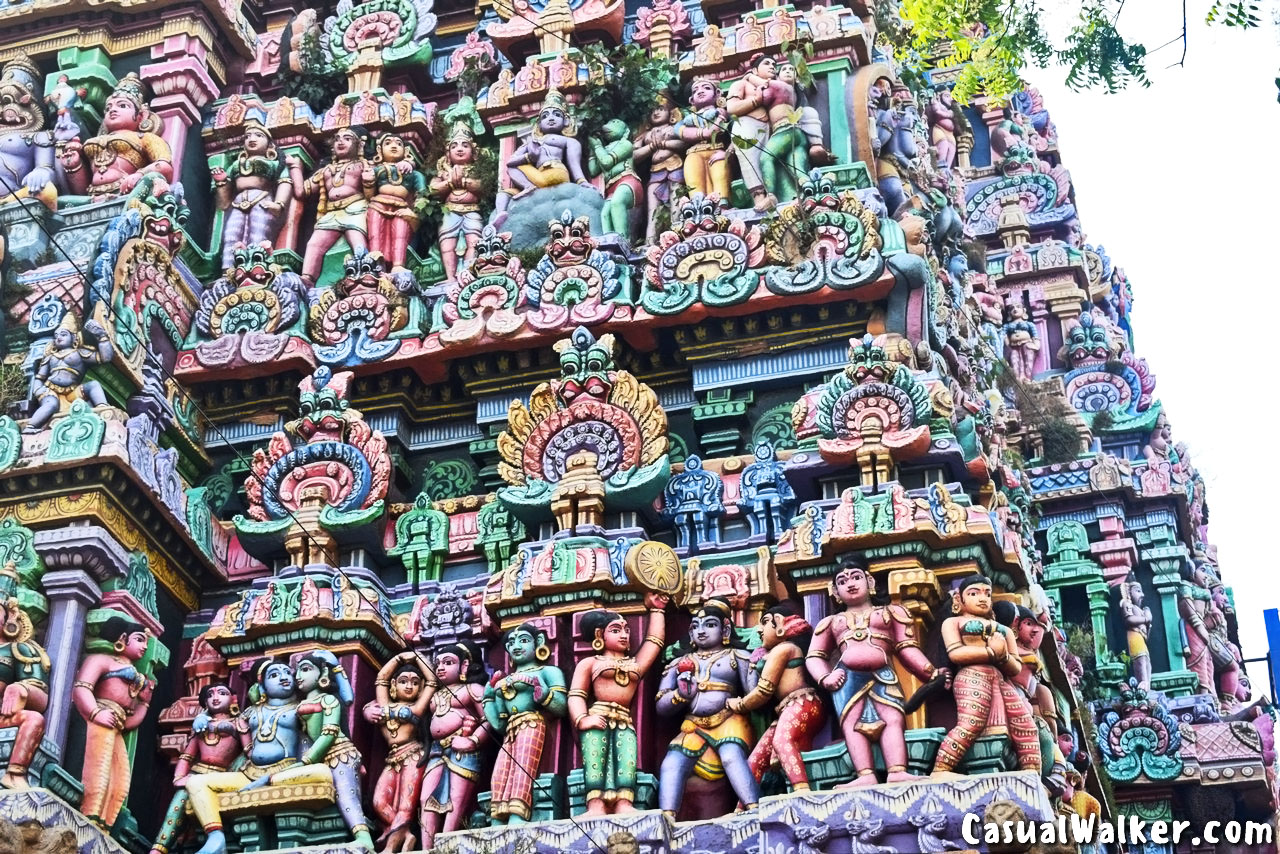
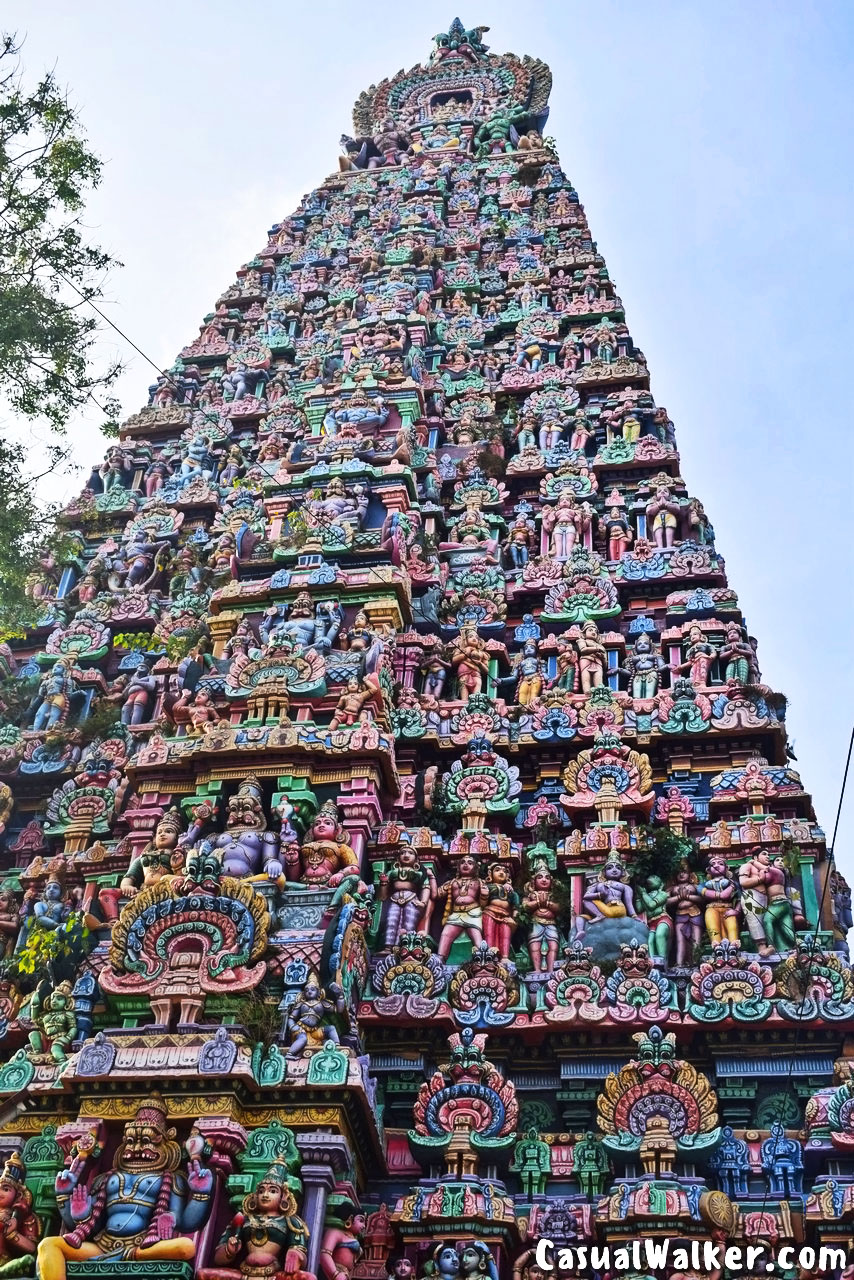
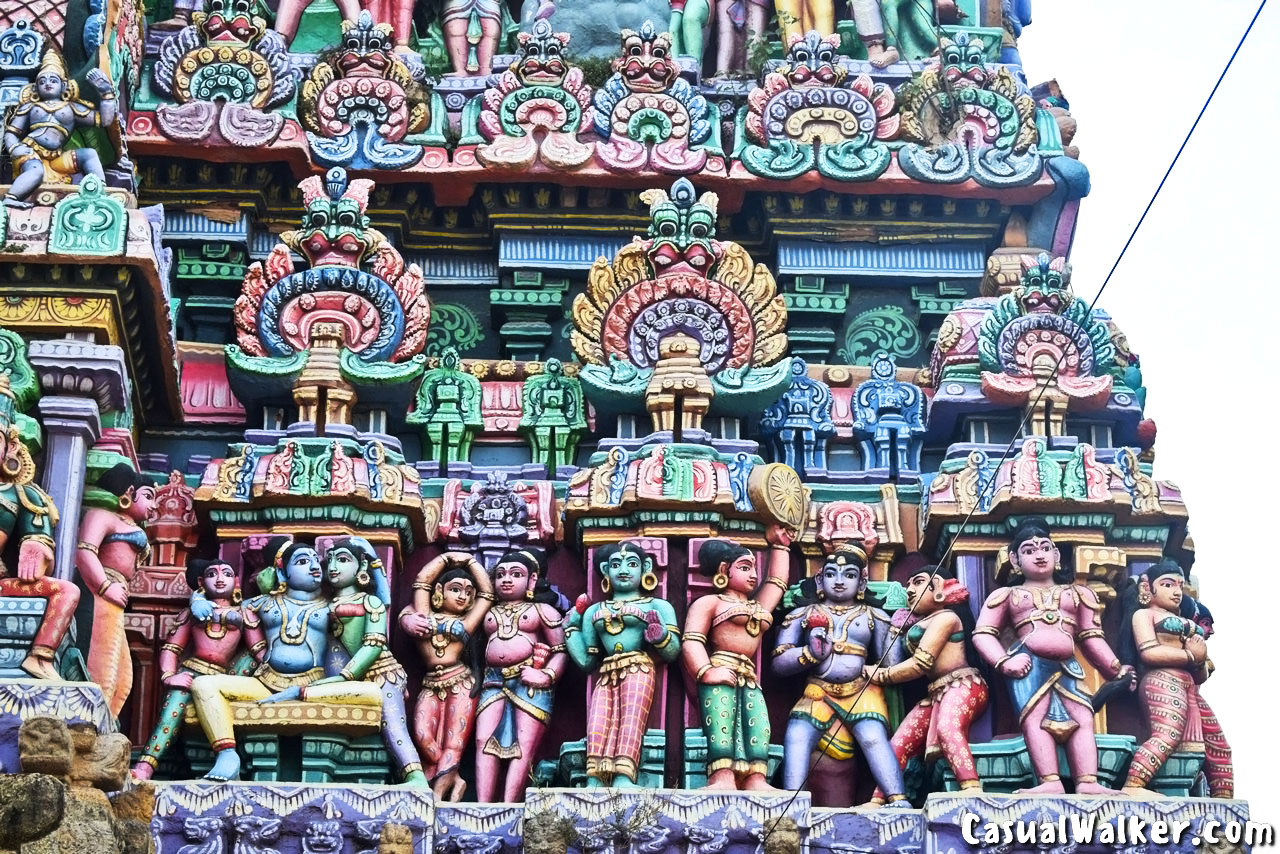
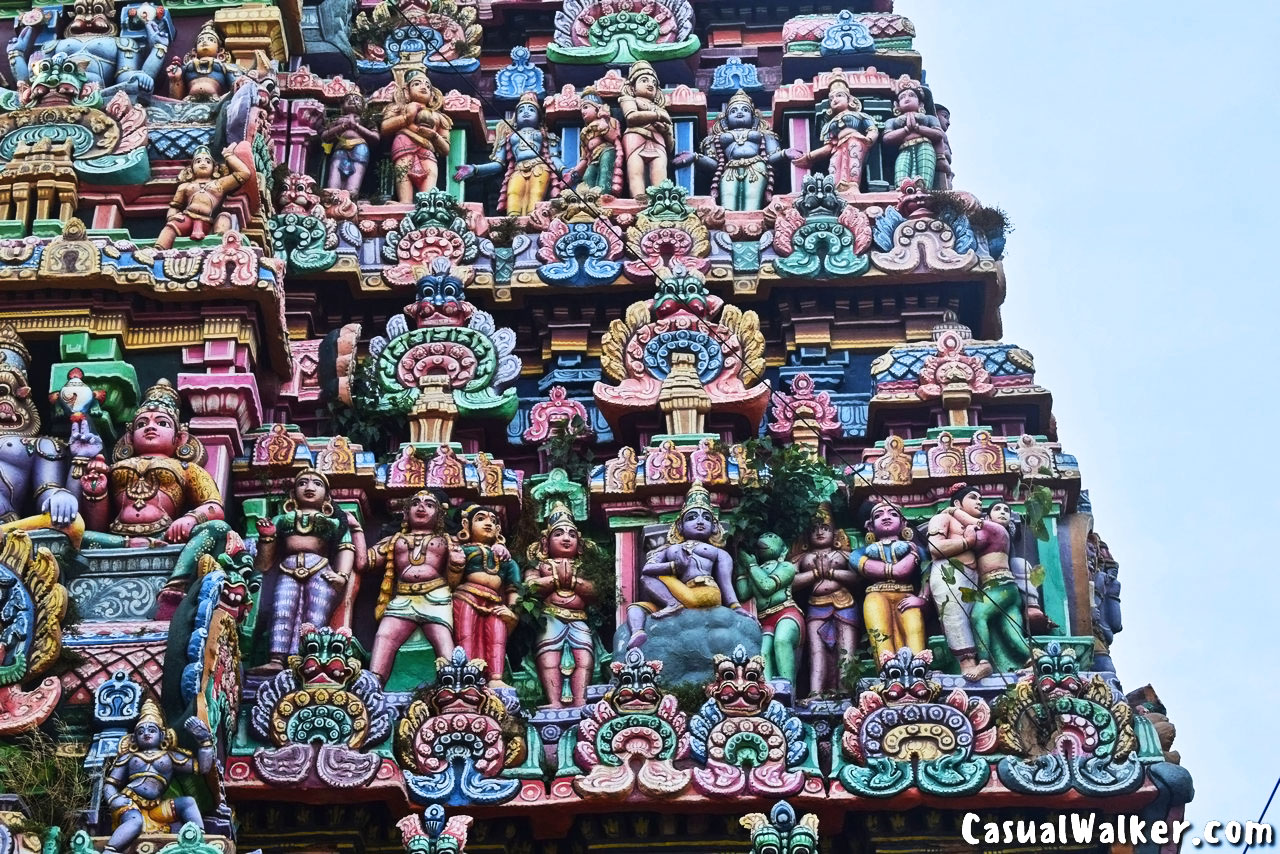
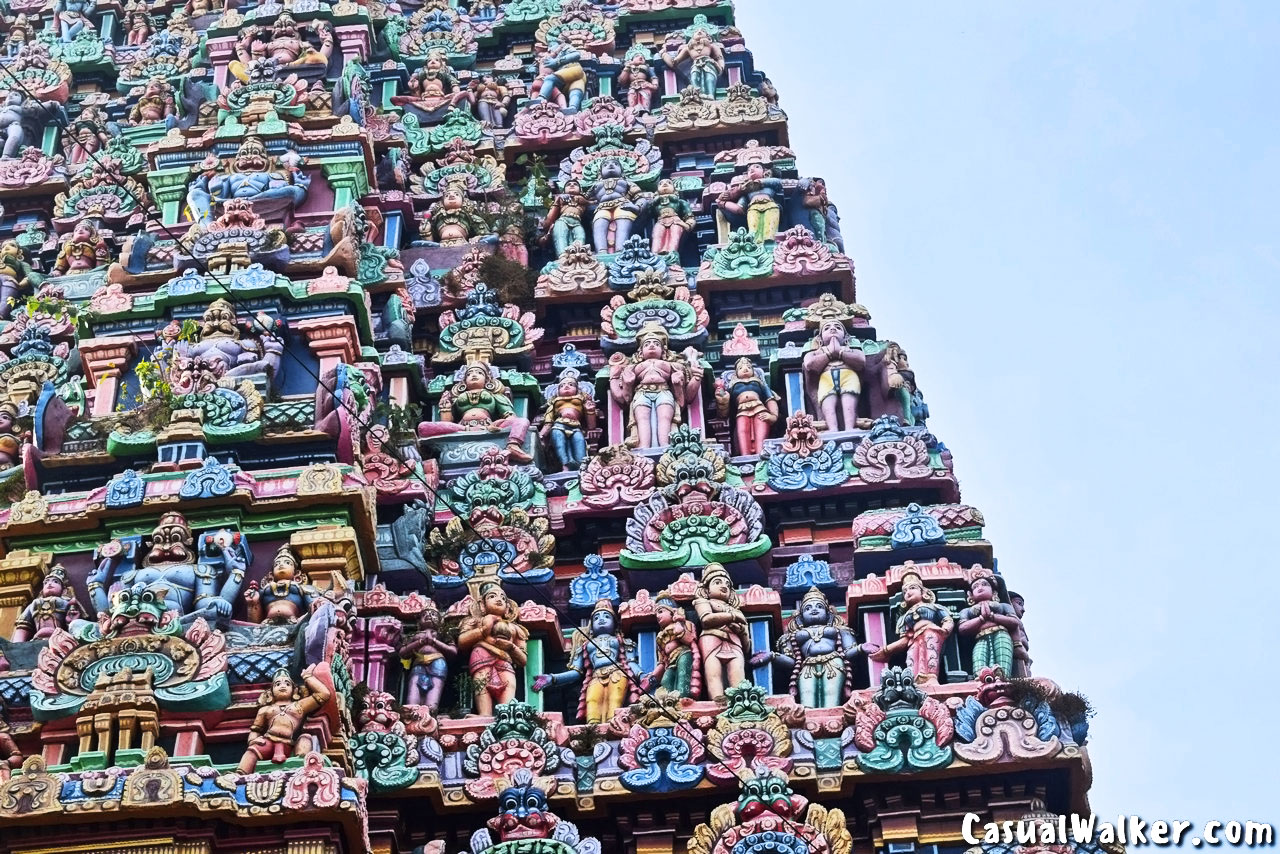
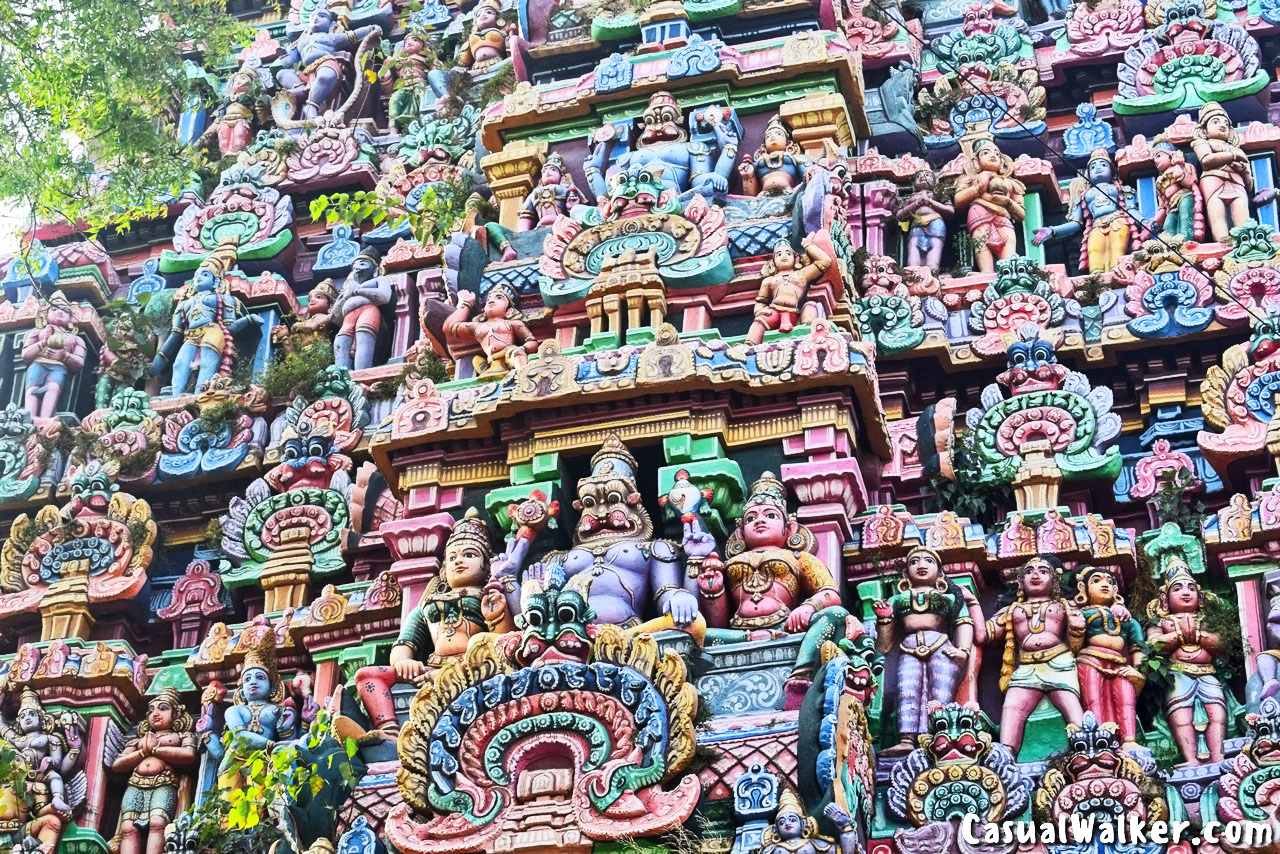
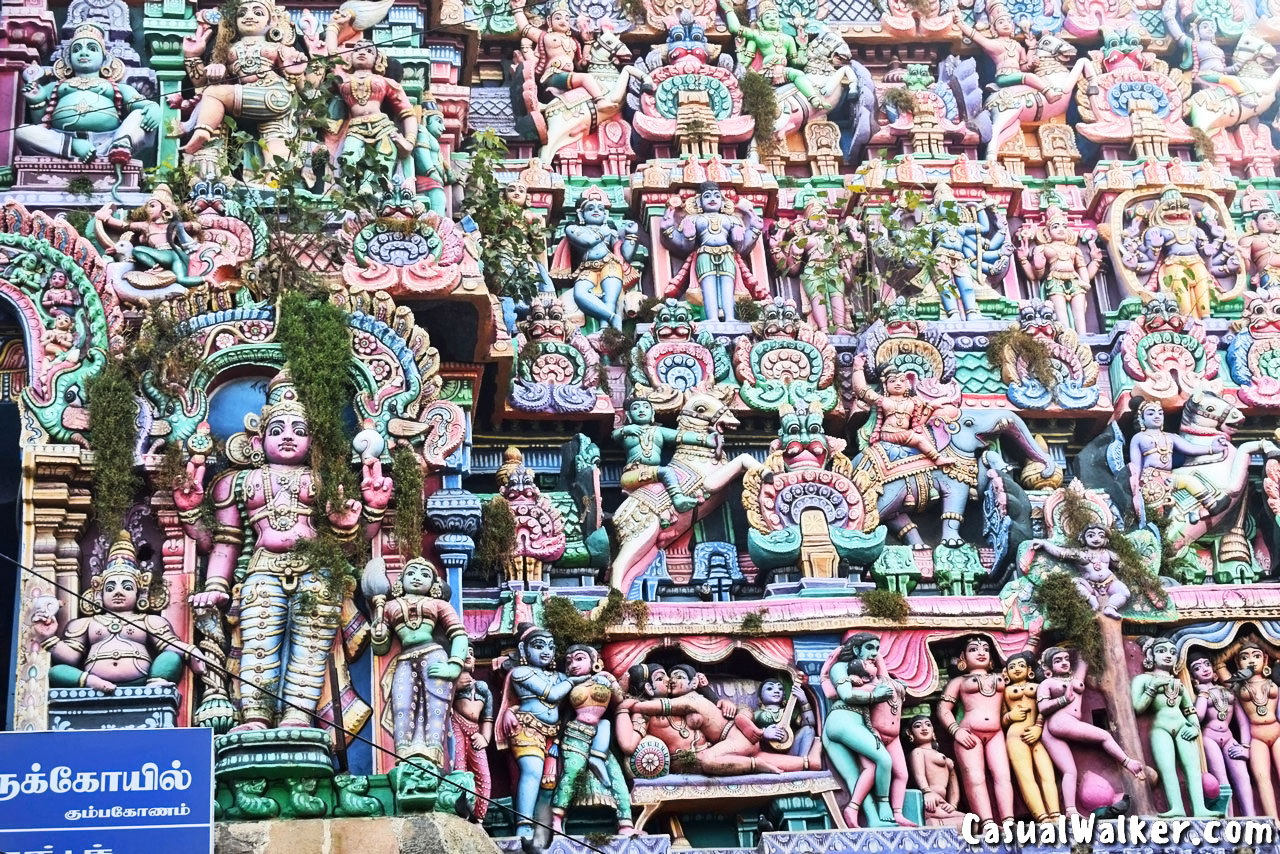
This huge Sarangapani temple tower is an architectural masterpiece, the most colorful tower – the gopuram depicts the sculptures showing some of the scenes of lovemaking, series of horses, and elephants with armed soldiers
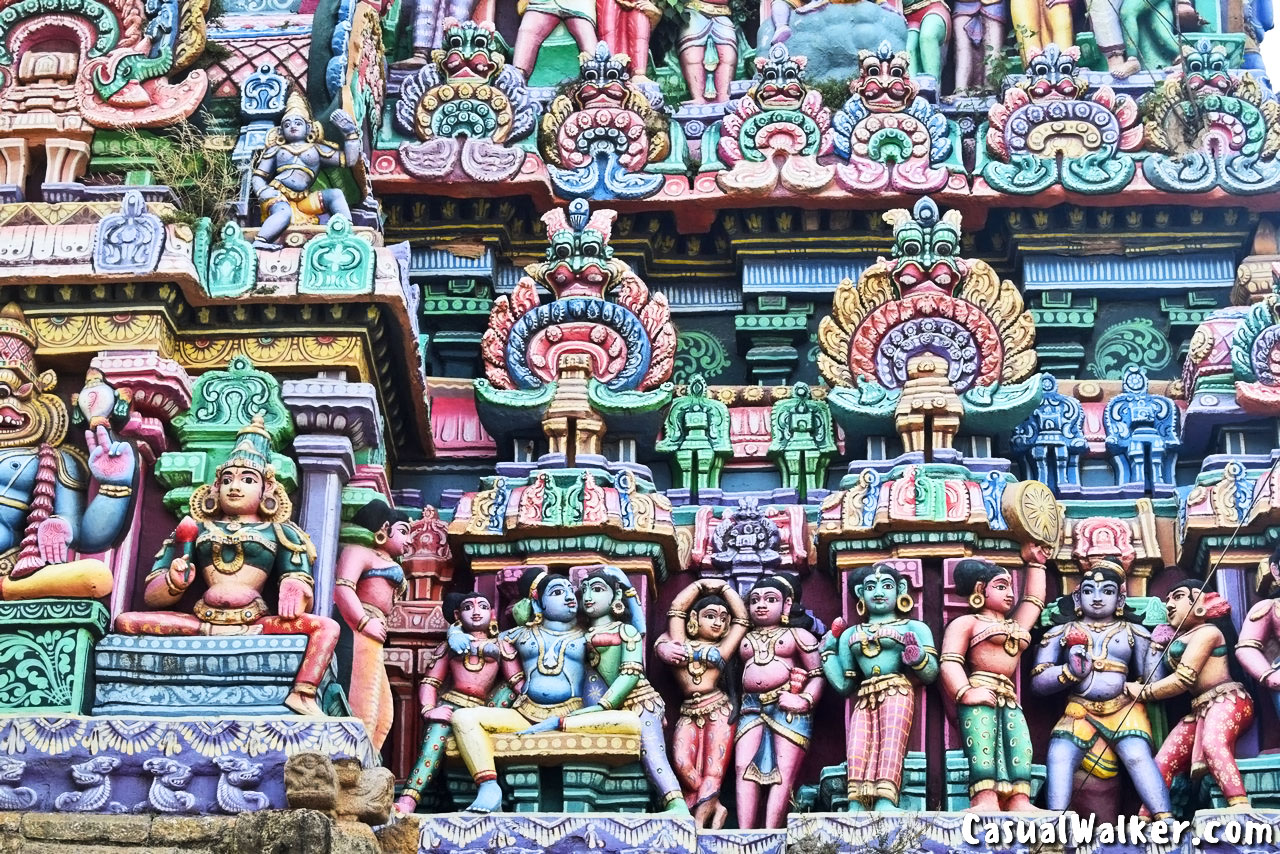
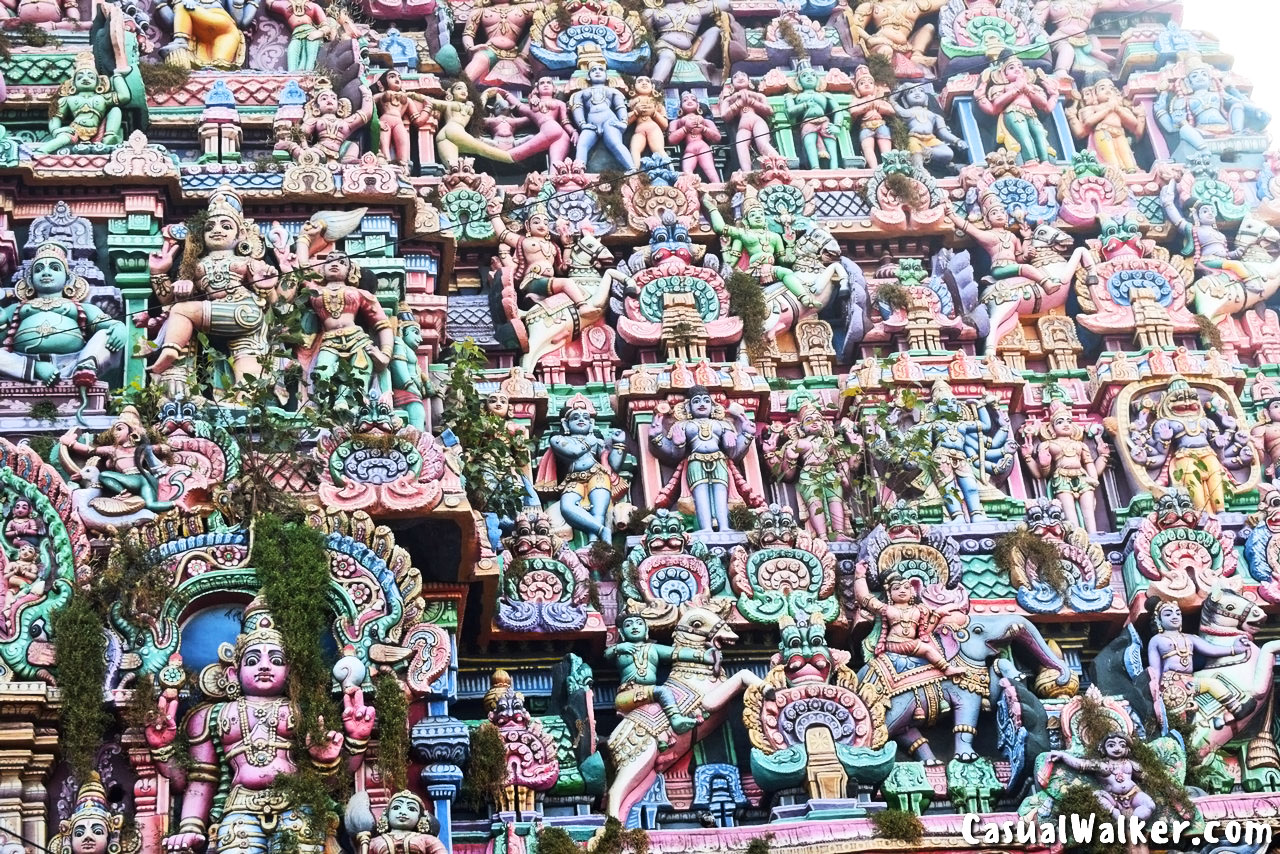
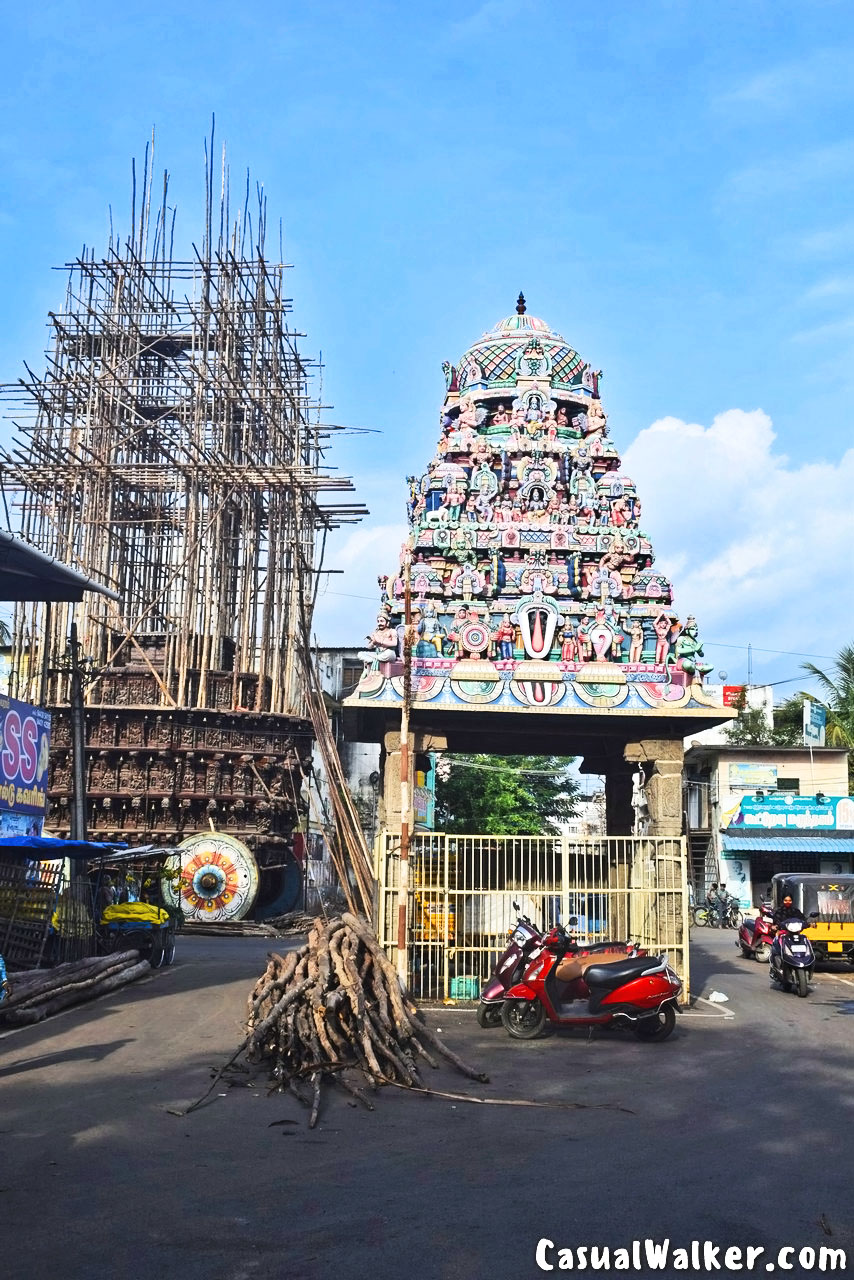
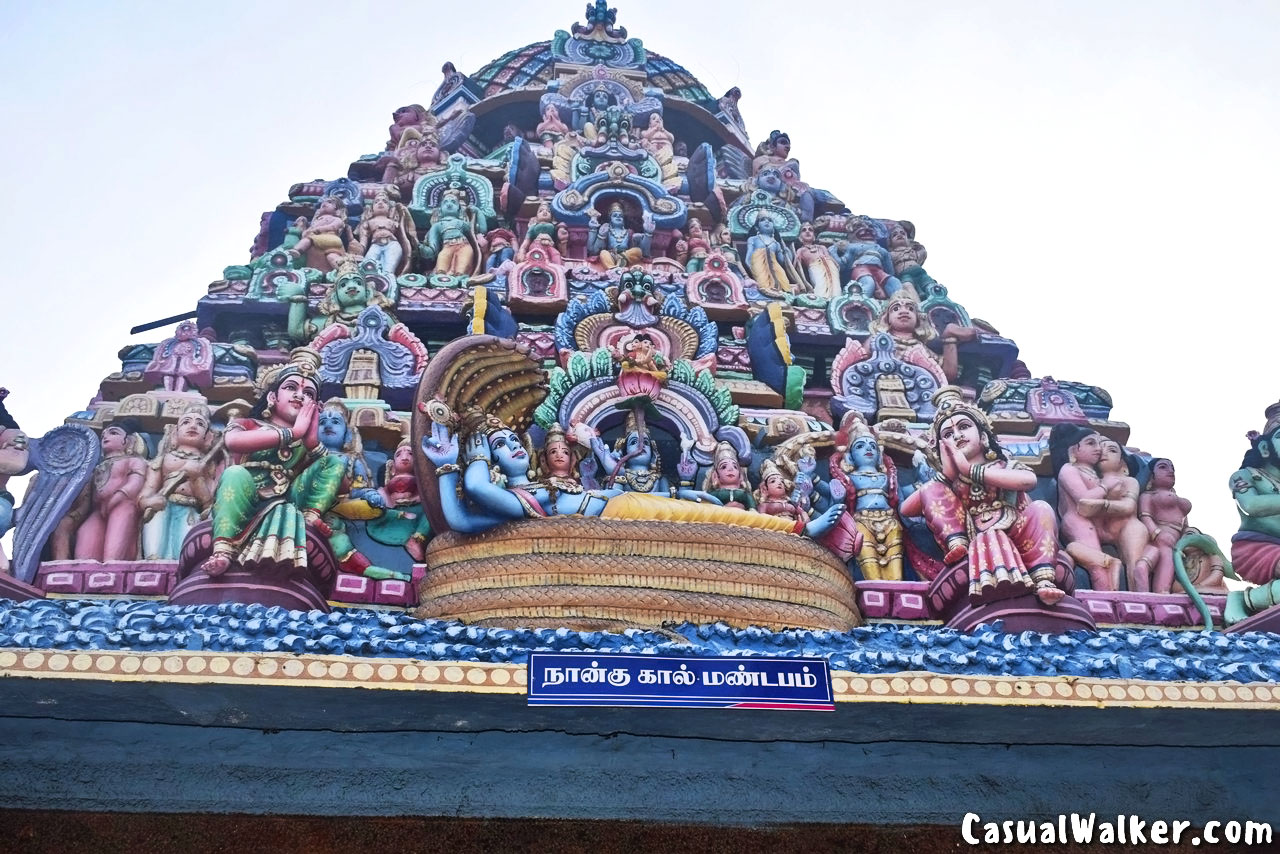
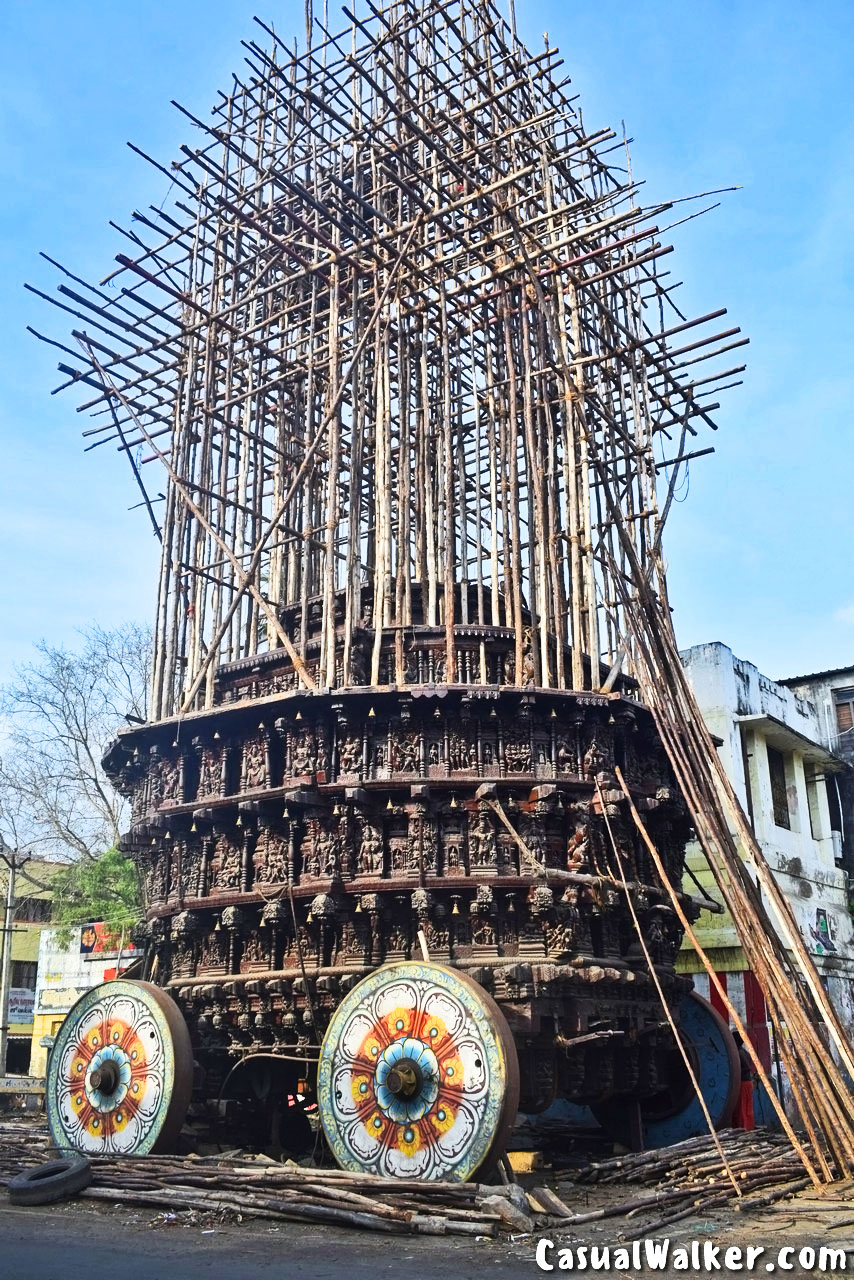
The rath yatra of the temple also is famous for its high artistic beauty called Chithira Ther. Saint Tirumangai Azhwar calls this Rathabandham.



Similar Famous Lord Vishnu Temples you may like to Visit:




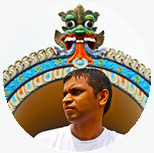













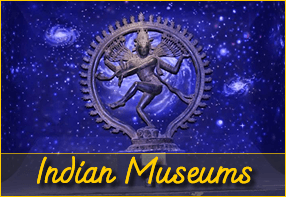




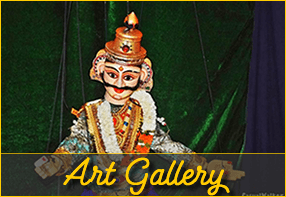
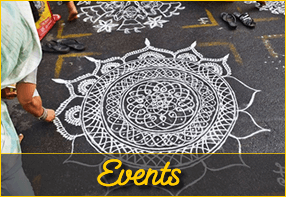


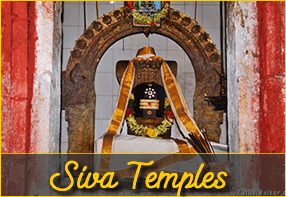
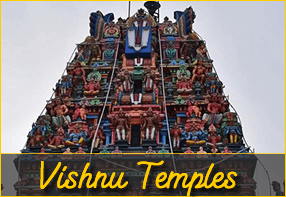

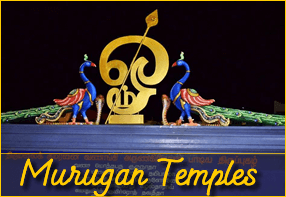
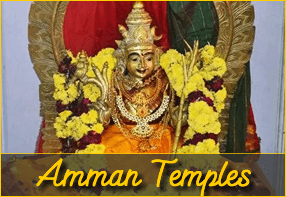
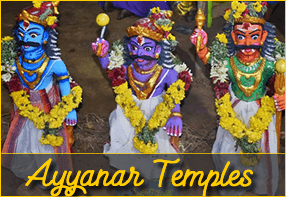



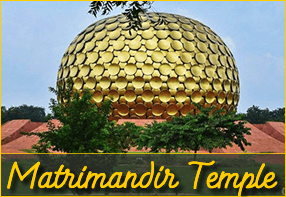
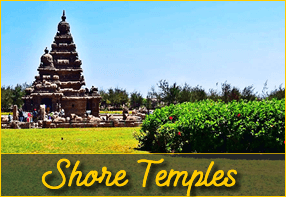

 Related Stories
Related Stories





